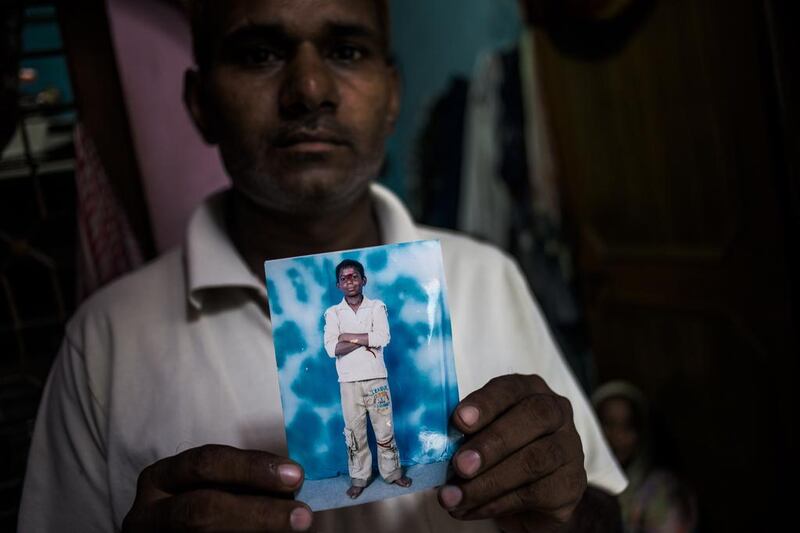NEW DELHI // In a cramped room at the back of a narrow two-storey house, Rajesh Devi sits on the floor crying, surrounded by the mementos of her 15-year-old son’s life — four athletic trophies, a sketch book with drawings of motorcycles and superheroes and “sorry”, “thank you” and other English phrases scribbled on the wall.
Rajan Chand was beaten to death last month, not in the course of a robbery or following a car accident or in an act of political violence. Rather, he was killed over kite flying, a pastime so popular in India that thousands of the brightly coloured toys are often seen diving, swooping and gliding through the sky above Delhi from early afternoon until late into the evening, especially during the August high-wind season.
Rajan more than dabbled in the sport. He also was a kite-fighting enthusiast, the object of which is to manoeuvre your kite close enough to your rival’s to sever the long string that connects to its pilot. Kite fighting can be intensely competitive, but it has never been lethal.
So when boys perched on a neighbouring rooftop challenged him to a kite fight on August 15, India’s Independence Day, Rajan thought little of it. And after he dispatched their kite quickly, he shrugged off their anger.
When they dared him to “come downstairs so we can settle this,” a friend of Rajan’s recalled, “We laughed it off”.
Two days later, as he returned home with a friend from buying bread at a local restaurant, Rajan was accosted in a back alley. The friend later said Rajan had been struck in the temple, slipped to the pavement and started having seizures. By the time they transported him to a hospital 10 kilometres away, he was dead.
According to Rajan’s father, the police refused to make arrests until he and angry neighbours placed his son’s body in the middle of the road, refusing a cremation until arrests were made. Two young men — one aged 16 and the other 17 — have been taken into custody.
The pair will be tried in juvenile court. If convicted of Rajan’s murder, the stiffest sentence they could receive is three years in a correctional facility.
“They taunted him, they beat him and now he is gone, sobbed Ms Devi, 40. “We don’t want anything but justice for our son. Give them to us as dead bodies.”
Until the trial takes place, Rajan’s family, friends and neighbours are left to ponder how a hobby could go so terribly wrong.
“I have never heard of anything like this in my life,” said Kapil, 21, Rajan’s eldest brother. “Fighting over a kite is at most a heated exchange. Why would anyone kill my brother over that?”
Kite-flying enthusiasts said they were shocked and saddened by the death.
“This should have never happened,” said Mehul Pathak, the founder of Vibrant Kite Club India. “In my 37 years of flying kites, our community has never heard of something like this. I am shocked and saddened.”
“Of course sometimes there are arguments over who cuts whose kite, but this is an extreme case of violence,” Mr Pathak said. “Kite-flying connected to any violence? No, it’s a fun game, something to enjoy.”
At most, the main casualties of kite-flying competitions have been gliding birds who become entangled in kite strings.
A popular a sport that even the poor can afford, the sport takes places across parks and rooftops of India.
Mohammed Farruq, 29, the owner of Noor Kite Centre in New Delhi, said the incident had cast a gloom over the weekend’s kite-flying competitions.
“Of course we hear about people fighting, but that’s over the competitive spirit of the sport,” Mr Farruq said. “This is the first I have heard of such violence. What a tragedy.”
Although the kite-flying season continued in Delhi after Rajan’s death, no one flew kites from the rooftops of his neighbourhood, said one of his friends.
“No needs to remind us of how ugly it can get.”
sbhattacharya@thenational.ae





